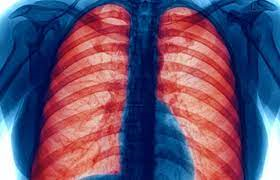Daily News Analysis.
Pradhan Mantri Bharatiya Jan Aushadhi Kendras : At Railway Station
News: Pradhan Mantri Bharatiya Janaushadhi Kendras would be set up at train stations all across the nation, according to the Railways Ministry.
Under the Pradhan Mantri Bhartiya Jan Aushadhi Pariyojana, which was introduced in November 2008 by the Department of Pharmaceuticals and Ministry of Chemicals and Fertilisers, Pradhan Mantri Bhartiya Jan Aushadhi Kendras are established. The goal is to reduce out-of-pocket healthcare costs by making high-quality medications accessible to all people, especially the poor.
They offer generic medications, which are less expensive yet have the same quality and effectiveness as more expensive branded medications. The Jan Aushadhi Stores are the exclusive source for medicinal medications. To increase the Jan Aushadhi store’s viability, they also sell allied medical supplies that are frequently found at chemist stores.
With the cooperation of all CPSUs, the Pharmaceutical & Medical Devices Bureau of India (PMBI) was established under the Department of Pharmaceuticals, Government of India, for the purpose of coordinating the acquisition, supply, and marketing of generic medications through the PMBKs.
Chronic Obstructive Pulmonary Disease:
News: Patients with low blood levels of vitamin K are more likely to have asthma and chronic obstructive pulmonary disease (COPD), as well as impaired lung function, according to a recent study.
COPD is a common lung condition that restricts airflow and makes breathing difficult. COPD comes in two primary kinds. The majority of COPD sufferers have both illnesses together. Chronic bronchitis, which causes a persistent cough that produces mucus. Emphysema, a condition in which the lungs gradually suffer harm.
Causes: Prolonged exposure to irritant gases or particulates, most frequently from cigarette smoke, is the usual cause. The most typical signs of COPD include fatigue, a chronic cough (often with phlegm), and trouble breathing. The signs of COPD can deteriorate rapidly. Flare-ups are the term for this. These typically last a few days and frequently call for extra medication.
Heart disease, lung cancer, and a number of other diseases are more likely to occur in people with COPD. Vaccinations, quitting smoking, and avoiding air pollution can all help COPD get better even if it cannot be cured. Medicines, oxygen, and pulmonary rehabilitation can all be used to treat it.
National Automated Fingerprint Identification System:
News: The NAFIS of NCRB team was recently honoured by the Union Home Minister for receiving the Gold Award from the Department of Administrative Reforms and Public Grievances for Excellence in Government Process Reengineering for Digital Transformation.
A searchable national database of criminal and criminally connected fingerprints is called NAFIS. The Central Fingerprint Bureau in New Delhi, which houses the National Crime Records Bureau (NCRB), is in charge of managing it.
The web-based application’s primary goal is to compile fingerprint information on every criminal from every state and every Union Territory. Law enforcement organizations will be able to submit, track, and retrieve data in real time, 24 hours a day.
Law enforcement organizations can submit, track, and retrieve data from the database using NCRB. Each criminal who is apprehended for the offence receives a special 10-digit National Fingerprint Number (NFN) from NAFIS within 24 hours.
The individual ID will be used throughout the offender’s lifetime. Crimes committed under several FIRs will all be reported as events under the same NFN. The state code of the state where the offender is registered will be the first two digits of the ID, followed by a sequence number. The state partition will contain state-specific IDs.
In addition to this, a digital record will be added as storage in the future to match the fingerprints. With NAFIS, it is possible to find a person of interest quickly and link their identity to any outstanding warrants, alerts, or details about linked criminal activity that are kept in other police information reference databases.
About department of Administrative Reforms and Public Grievances for Excellence in Government Process Reengineering for Digital Transformation.
An Organization and Method (O & M) Division was established in the Cabinet Secretariat in March 1954 as a follow-up to one of Paul H. Appleby’s recommendations. The Organization and Method (O & M) Division was moved from the Cabinet Secretariat to the Department of Administrative Reforms within the Ministry of Home Affairs in March 1964.
The Department of ‘Administrative Reforms’ activity was transferred to the Department of Personnel, which had been established under the Cabinet Secretariat on August 1, 1970, and given the new name of Department of Personnel and Administrative Reforms, on February 7, 1973.
The Ministry of Home Affairs acquired the Department of Personnel and Administrative Reforms in April 1977 from the Cabinet Secretariat. A full-fledged Ministry of Personnel and Training, Administrative Reforms, Public Grievances, and Pensions was established in March 1985 from the Department of Personnel and Administrative Reforms. the Department of Personnel and Training (DOPT), the Department of Administrative Reforms and Public Grievances (DARPG), and the Department of Pension and Pensioners Welfare.
On December 10, 1985, the Ministry of Personnel and Training, Administrative Reforms, Public Grievances, and Pensions was renamed the Ministry of Personnel, Public Grievances, and Pensions. The Prime Minister was given complete control over this Ministry, with the assistance of a Minister of State.
Index Of Industrial Production:
News: India’s Index of Industrial Production fell to a three-month low of 3.7% in June, primarily as a result of the manufacturing sector’s weak performance.
It is one of the most important indicators of economic growth for tracking changes in Industrial Production behavior over time in relation to a given base year. It shows how physical production in a given industry changed in relation to the prior year during a given year.
The National Statistical Office (NSO) calculates and releases it each month. A value of 100 is always assigned to the base. 2011–12 serves as the IIP series’ current base year in India. If the current IIP shows a value of 116, there has been a 16% increase from the base year.
Eight Core Industry Index (ICI):
In eight core industries—coal, crude oil, natural gas, petroleum refinery products, fertilizers, steel, cement, and electricity—ICI measures both the overall and individual performance of production.
Before the Central Statistics Office releases IIP, the ICI aims to give a head start indicator of production performance in “core” industries. Both industrial and general economic activity are likely to be impacted by these industries.
National Statistical Office (NSO) is mandated with the following responsibilities:
- acts as the nodal agency for planned development of the statistical system in the country, lays down and maintains norms and standards in the field of statistics, involving concepts and definitions, methodology of data collection, processing of data and dissemination of results;
- coordinates the statistical work in respect of the Ministries/Departments of the Government of India and State Statistical Bureaus (SSBs), advises the Ministries/Departments of the Government of India on statistical methodology and on statistical analysis of data;
- prepares national accounts as well as publishes annual estimates of national product, government and private consumption expenditure, capital formation, savings, estimates of capital stock and consumption of fixed capital, as also the state level gross capital formation of supra-regional sectors and prepares comparable estimates of State Domestic Product (SDP) at current prices;
- maintains liaison with international statistical organizations, such as, the United Nations Statistical Division (UNSD), the Economic and Social Commission for Asia and the Pacific (ESCAP), the Statistical Institute for Asia and the Pacific (SIAP), the International Monetary Fund (IMF), the Asian Development Bank (ADB), the Food and Agriculture Organizations (FAO), the International Labour Organizations (ILO), etc.
- compiles and releases the Index of Industrial Production (IIP) every month in the form of ‘quick estimates’; conducts the Annual Survey of Industries (ASI); and provides statistical information to assess and evaluate the changes in the growth, composition and structure of the organized manufacturing sector;
- organizes and conducts periodic all-India Economic Censuses and follow-up enterprise surveys, provides an in-house facility to process the data collected through various socio economic surveys and follow-up enterprise surveys of Economic Censuses;
- conducts large scale all-India sample surveys for creating the database needed for studying the impact of specific problems for the benefit of different population groups in diverse socio economic areas, such as employment, consumer expenditure, housing conditions and environment, literacy levels, health, nutrition, family welfare, etc.;
- examines the survey reports from the technical angle and evaluates the sampling design including survey feasibility studies in respect of surveys conducted by the National Sample Survey Organizations and other Central Ministries and Departments;
- dissemination of statistical information on various aspects through a number of publications distributed to Government, semi-Government, or private data users/ agencies; and disseminates data, on request, to the United Nations agencies like the UNSD, the ESCAP, the ILO and other international agencies;
- releases grants-in-aid to registered Non-Governmental Organizations and research institutions of repute for undertaking special studies or surveys, printing of statistical reports, and financing seminars, workshops and conferences relating to different subject areas of official statistics.
Mushkbudji Rice : Geographical Indication (GI) Tag
News: Mushkbudji Rice received the Geographical Indication (GI) tag.
- Mushkbudji Rice is short bold aromatic rice grown in higher reaches of Kashmir valley.
- The cooked rice is unique and possesses a harmonious blend of taste, aroma and rich organoleptic properties.
- It is mainly is grown in areas of Sagam, Panzgam and Soaf Shali of district Anantnag and Beerwah belt of district Budgam.
- The consumption of aromatic rice in Kashmir has now been limited to special occasions, marriages, and festivals.
Geographical Indication Tag:
- It is a sign used on products that have a specific geographical origin and possess qualities or a reputation that are due to that origin.
- This is typically used for agricultural products, foodstuffs, wine and spirit drinks, handicrafts and industrial products.
- The Geographical Indications of Goods (Registration and Protection) Act, 1999 seeks to provide for the registration and better protection of geographical indications relating to ods in India.
- This GI tag is valid for 10 years following which it can be renewed.








